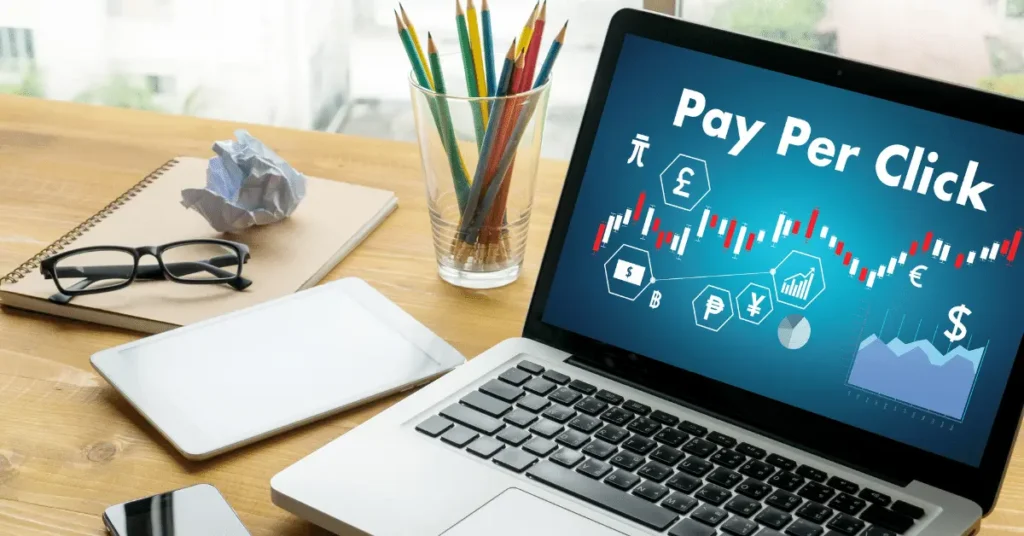Pay-per-click (PPC) is a form of online advertising where you pay a publisher (like Google or Facebook) every time someone clicks on your ad. It is one of the most common forms of online advertising, and it can be very effective for driving traffic to your website. However, it is also one of the most complicated and misunderstood forms of advertising. This guide will explain everything you need to know about PPC, including how it works, the different types of campaigns you can run, and how to measure your results.
WHAT IS PAY-PER-CLICK?
PPC is a form of online advertising that allows businesses to place ads on search engines and other websites to attract traffic. When a user clicks on one of these ads, the business pays the publisher (usually a website owner) a pre-determined amount of money.
PPC is often used to generate traffic to a website and is a very effective way to reach potential customers. Businesses can target their ads to specific demographics and can track the results of their campaigns in real-time. It is also an important concept in digital marketing.
If you’re thinking about using PPC for your business, or if you’re just getting started, it’s important to understand the basics. In this article, we’ll explain what PPC is and how it works, and we’ll also give you some tips for getting started.
PPC AND SEO
With evolving times businesses have also changed their strategies to tackle their customers. SEO and PPC are both building blocks of digital marketing. An SEO-optimized website attracts more visitors and ranks higher on search engines. Thus it converts many visitors into potential customers. SEO improves the visibility of businesses on search engines and their users.
While PPC is a strategy that allows you to buy site visitors rather than earning them organically. According to some researchers, PPC customers are more likely to make a purchase than organic customers. When used correctly the initial cost seems insignificant in front of the revenue generated through it.
HOW DOES PPC WORK?
Most people start PPC marketing with Google Ads because it provides with greater audience base as compared to its competitors. Choosing the correct platform is important because you can reach a larger audience and have multiple ways to set up your goals. PPC works through a very easy simple process which is as follows:
- Find a suitable platform and signup for an account
- Using the right keywords, create your advertisement
- Next, set the cost of each click that you are willing to pay
- After setting the price, the ad goes into auction and competes with other advertisers who are auctioning with the same keyword
- The auction then decides the order of ads.
- Lastly, when someone clicks on your ad you get paid.
The main principles are usually the same and revolve around these steps but there might be some differences in different ad formats.
WHAT ARE THE BENEFITS OF PPC?
Pay-per-click (PPC) is a form of online advertising in which advertisers pay a publisher (such as a website owner) when their ad is clicked.
TARGET AUDIENCE
PPC is a very effective way to reach your target audience, as you only pay when someone actually clicks on your ad. This means that you’re not wasting money on ads that no one sees. The budget you had set for the advertisement will not go to waste because it allows you to target your exact audience through the data derived through devices used, location, and time of day.
RECEIVE CLICKS INSTANTLY
One of the reasons why PPC is very popular among marketers is that you can start getting returns very quickly. As soon as your ad is live and is it visible to the audience you will receive clicks very quickly as compared to SEO.
COST EFFECTIVE
PPC also allows you to target your ads very specifically, so you’re only paying for ads that are relevant to your business. And because PPC is an auction-based system, you can set your own budget and only pay what you’re comfortable with. You are in full control of how much you want to spend in a day or month so you can manage your budget accordingly.
Also, you are in full control of running your ads and you can use them with your ease. This also includes the time of the day and days of the week.
WHAT ARE THE DIFFERENT TYPES OF PAY-PER-CLICK?
There are three main types of PPC:
1) CPC (COST PER CLICK):
This model is performance-based and the advertisers only pay when a user clicks on the ad. In this type of PPC, the advertiser pays a set amount each time a user clicks on their ad. The upside of CPC is that it has a high viewability rate, is measurable, and is very cost-effective.
It is most suitable for ad campaigns, pop-ups, and push ads.
2) CPM (COST PER THOUSAND IMPRESSIONS):
Cost per mile or cost per thousand impressions. In this type of PPC, the advertiser pays a set amount each time their ad is displayed 1000 times. The drawback of this model is that the advertiser how much he will pay for each visit because of additional thousand impressions.
This type of model is suitable for those businesses that want to create brand awareness and attract customers.
3) CPA (COST PER ACTION OR CONVERSION):
This type of model is the favorite of advertisers but the least favorite of publishers. In this type of PPC, the advertiser pays for each conversion, such as a purchase or sign-up or even downloading an app. In this type of PPC, the link between cost and objectives is well-defined.
The downside is that it becomes expensive for advertisers sometimes. Also, this model is not really appreciated by publishers because the results are not so predictable.
The upside of this kind of model is that it is risk-free and pocket friendly for advertisers.
WHAT ARE THE MOST POPULAR PAY-PER-CLICK PLATFORMS?
So, what are the most popular PPC platforms?
The answer to that question depends on who you ask. But generally, the most popular PPC platforms are Google AdWords, Bing Ads, and Facebook Ads.
GOOGLE ADS
It is the most popular pay-per-click platform and allows ads to run on Google, Youtube, and Gmail, and also displays them on Google Display Network. Almost all kinds of businesses can benefit from Google Ads in one way or another.
BING ADS
Microsoft advertising is more or less the same as Google Ads. Bing Ads lets you run ads on Bing, Yahoo, and AOL. Google Ads and Bing Ads both are similar in their working mechanism but the main difference lies in their potential reach with the former having a comparatively larger one.
FACEBOOK ADS
Facebook has almost 3 billion active users and when it comes to targeting the right audience it can be very handy. The reason behind this is that it knows so much about the users and that information becomes important for targeting the right audience. The ads can show up on Facebook’s feed, on messenger, and sometimes on non-Facebook applications too.
HOW MUCH DOES PAY-PER-CLICK COST?
PPC is a type of advertising that allows you to pay for placement on search engines. When someone clicks on your ad, you pay a pre-determined amount of money. The cost of PPC varies depending on the keywords you choose and the competition for those keywords. It also depends on your business and your preferred mode of ad networks.
If you choose Google Ads as your platform for advertising your ads, you can control your cost of PPC and other factors because it is a highly customizable platform. It fits everyone and you can increase or decrease your budget when trying it out to see what suits you.
The Google Display Network is typically cheaper than PPC, with an average cost of less than $1. You should keep in mind that $1 to $2 per click is the average cost of PPC when advertising on Google.
It’s important to remember that PPC is not a one-time expense. You will need to renew your placement every month or year, and the cost will continue to increase as the competition for those keywords grows.
HOW DO I GET STARTED WITH PAY-PER-CLICK?
Pay-per-Click is an ongoing optimization process and requires frequent updates. Mentioned below are five steps that can help you get started with your pay-per-click strategy.
1) SET GOALS
The most important part of any campaign is to decide what you want to achieve at the end. Defining the goals will help you choose the correct platform and direction for your campaign.
2) TARGETED AUDIENCE
Targeting the right audience is one of the most crucial parts of a PPC campaign. Without the right audience base, any marketing effort goes into vain. The kind of audience you target indicates which kind of advertising pathways you should adopt.
3) OPTIMIZED LANDING PAGES
There should be a very strong relationship between audience targeting and the optimization of the landing pages of a brand. The more relevant the landing pages are to the audience, the more the click-through rate and increased purchases.
4) AD CREATION
Ads link the landing pages to the user’s interest. Ads are created to catch the attention of users with your unique offers. Use audio/video aids and different types of media to optimize them.
5) ANALYZATION AND OPTIMIZATION OF PPC STRATEGY
The final step would be to analyze the keywords or targeting elements that are running your campaign. Keeping a track of certain metrics can help you stay on track and point out those elements that may need your attention.
CONCLUSION
Pay-per-click (PPC) is a type of online advertising where you pay a certain amount each time someone clicks on your ad. It’s a quick and easy way to get your product or service in front of potential customers, and it can be a great way to boost your traffic and sales.
If you’re ready to start using PPC, here are a few tips to help you get started:
-Start by creating a campaign that targets your ideal customer.
-Think about what you want to achieve with your campaign, and create ads that reflect those goals.
-Make sure your website is ready to convert visitors into buyers.
-Track your results and make changes as needed.
PPC can be a great way to boost your business, but it’s important to do your research first. If you’re not sure where to start, contact an experienced PPC provider for help.







